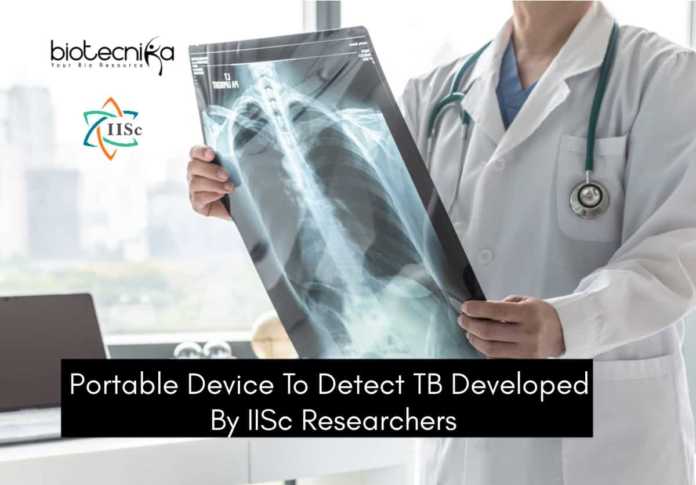IISc Portable TB Device
Tuberculosis is detected using a DNA Based test called NAAT- Nucleic Acid Amplification Test.
However, it is unreachable to a vast Indian population, especially in remote and backward regions, as the equipment is expensive.
Indian Institute of Science, Bengaluru researchers Dr. Bhushan J Toley and his Ph.D. scholar Navjot Kaur have now developed a compact, stand-alone and portable device that promises to overcome the limitation by drastically cutting down the costs.
IISc Portable TB Device- The Principle of the Device
The new device uses the principle called LAMP detection or Loop-Mediated Isothermal Amplification of the DNA of the TB bacteria present in infected samples. The screening uses a fluorescence reporter material that latches on to the amplified bacterial DNA.

The readings are taken by using a low-cost UV torch to detect fluorescence response and is coupled to a mobile camera to capture the images.
The IISc researchers, along with Dr. Joy S. Michael from Christan Medical College, Vellore, have performed a ‘blind test’ on 30 clinical samples. They have found the device to be 100% sensitive to the infected samples.
The IISc portable TB device has several
layers of acrylic sheets attached by a double-sided pressure-sensitive adhesive. The layers of acrylic sheets are designed to create cavities within which tiny glass fiber discs are embedded. The reaction for the detection of tuberculosis DNA occurs within these paper discs. It consists of dried reagents and fluorescence materialThe DNA samples of the patient’s sputum are placed in the discs of IISc Portable TB Device & incubated for about one hour. Later, the top layer is peeled off, and the fluorescent material is added. The UV light activates green – colored fluorescence in the infected samples, and the mobile camera captures the images.
The images obtained from the camera are coupled to a quantitative software which gives the degree of infection.
Although the sensitivity is excellent, the device requires further refinement to improve the specificity. Dr. Toley added that they are further developing the specificity of the device to reduce the rate of false-positive results.
After the IISc Portable TB Device, an app-based readout is also on the cards.






























